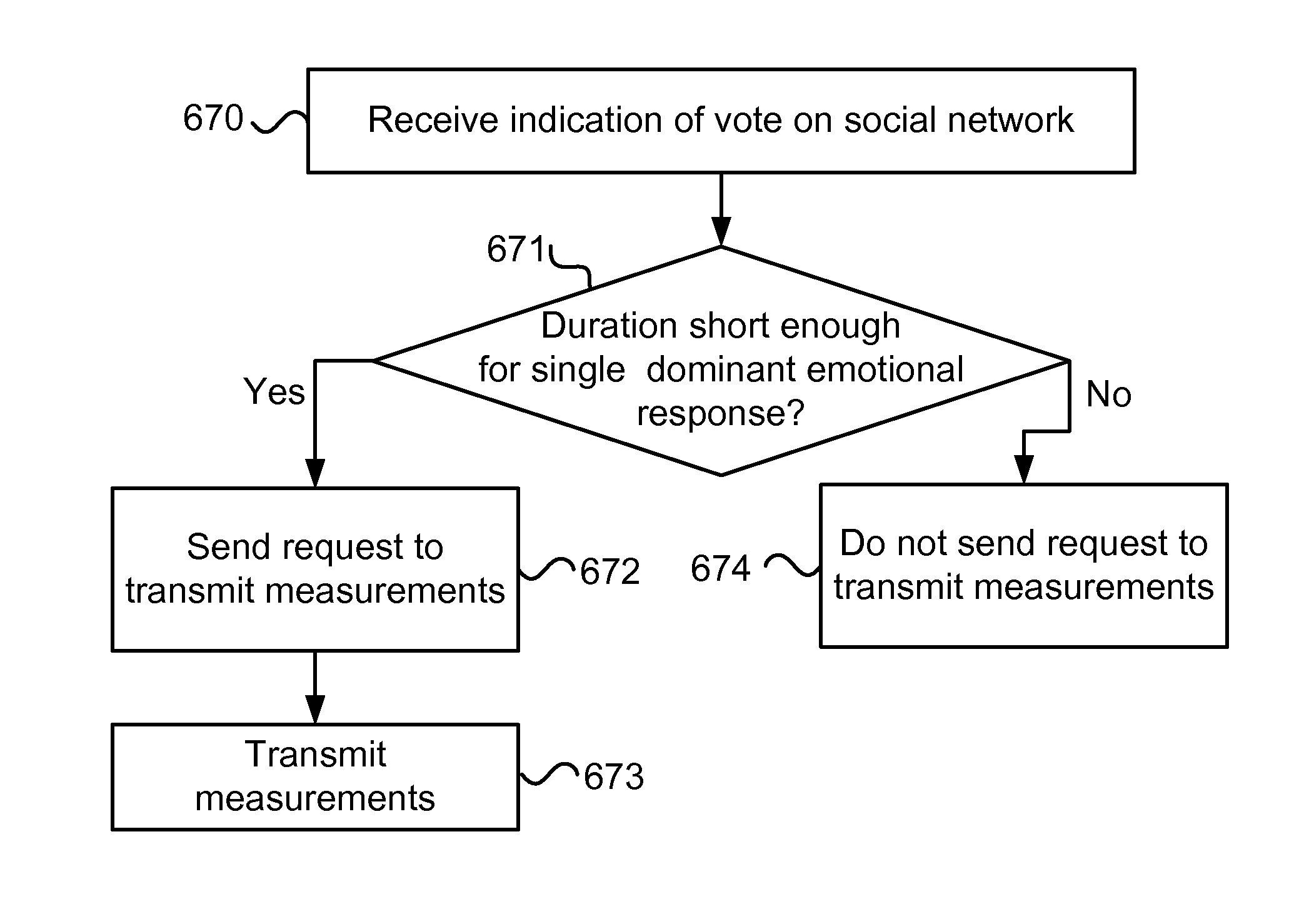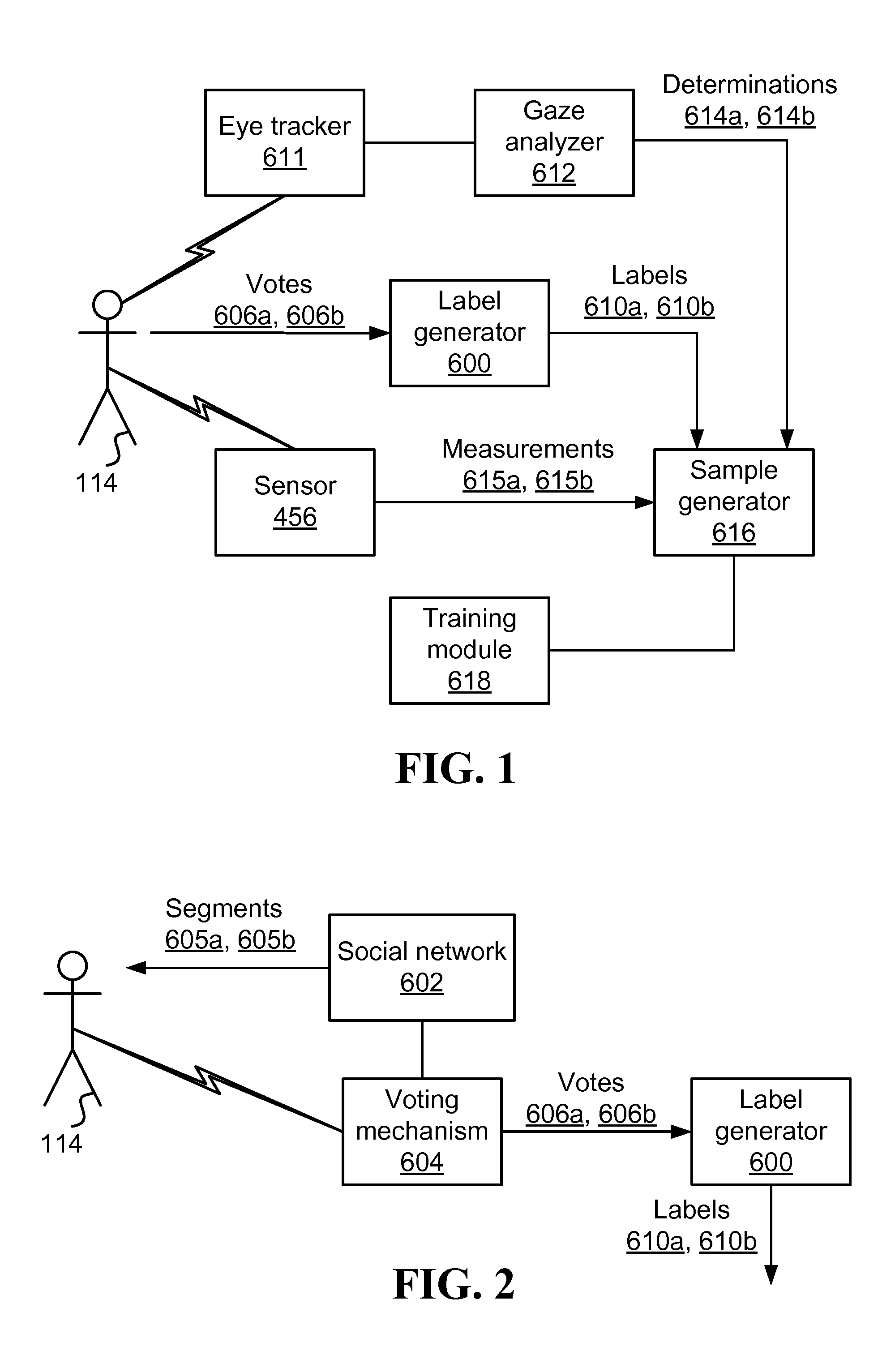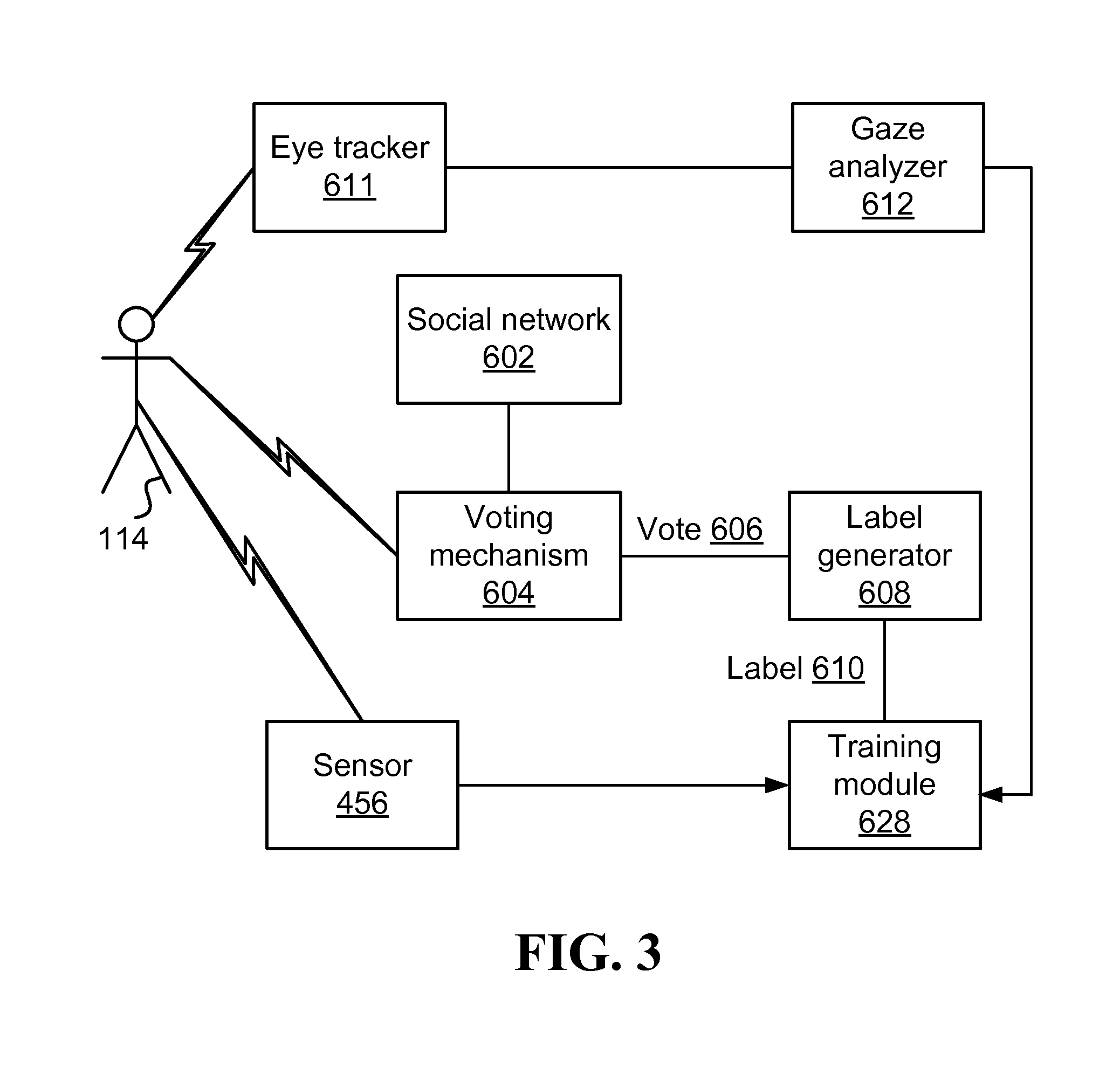Collecting naturally expressed affective responses for training an emotional response predictor utilizing voting on a social network
a technology of social network and natural expression, applied in the field of collecting natural expression affective responses for training an emotional response predictor utilizing voting on a social network, can solve the problems of difficult to collect such data, difficult to create facial expressions (such as micro expressions) accurately on demand, and not always possible to know
- Summary
- Abstract
- Description
- Claims
- Application Information
AI Technical Summary
Benefits of technology
Problems solved by technology
Method used
Image
Examples
Embodiment Construction
[0034]FIG. 1 illustrates one embodiment of a system configured to utilize eye tracking for collecting a naturally expressed affective response for training an emotional response predictor. The system includes at least a label generator 600, a gaze analyzer 612, and a sample generator 616.
[0035]In some embodiments, a user 114 interacts with a computer system and consumes content (e.g., by reading a post, viewing a clip, and / or conducting a conversation). Optionally, at least some of the content consumed may be from a social network 602, and / or at least some of the content may be consumed via the social network (e.g., content may be presented on a website, and / or application belonging to the social network 602). Alternatively or additionally, at least some of the content consumed by the user may be from a source other than the social network 602.
[0036]During the user's interaction with the computer system, the user 114 may perform an action that may be interpreted as casting a vote on...
PUM
 Login to View More
Login to View More Abstract
Description
Claims
Application Information
 Login to View More
Login to View More - R&D
- Intellectual Property
- Life Sciences
- Materials
- Tech Scout
- Unparalleled Data Quality
- Higher Quality Content
- 60% Fewer Hallucinations
Browse by: Latest US Patents, China's latest patents, Technical Efficacy Thesaurus, Application Domain, Technology Topic, Popular Technical Reports.
© 2025 PatSnap. All rights reserved.Legal|Privacy policy|Modern Slavery Act Transparency Statement|Sitemap|About US| Contact US: help@patsnap.com



